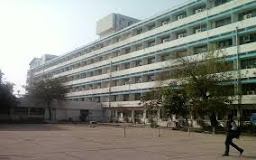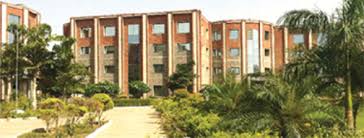The iconic images of women technicians and engineers erupting with joy at the news of the successful insertion of Mangalyaan into an orbit around Mars was splashed all over the world. India’s space programme’s fascinating successes is in no small measure due to the women scientists and engineers, many of whom are not much in the limelight.
Dr Seetha Somasundaram, Program Director at ISRO’s Space Science Programme Office, is one such star scientist.. A student of astronomy with specific interests in the study of variable stars in X-ray and optical bands, she has extensively contributed to the development of instruments for the various space based astronomical experiments conducted aboard Indian satellites over the years.
Dr Seetha, as she is fondly known to her friends and students, has played a vital role in almost all space science projects of ISRO.
Dr Seetha Somasundaram, Program Director at ISRO’s Space Science Programme Office
" The most remarkable thing about the success of MOM was that India became the first country in the entire world to have reached Mars in the very first attempt. "
As ISRO’s leading space science instrumentation specialist, she was involved in the payload characterization and calibration of Mangalyaan. It was India’s first interplanetary mission requiring delicate maneuvers. It had many nail biting moments for the scientists involved.
Dr. Seetha and her team had the responsibility to ensure that the payloads performed well as the craft orbited around the red planet after traveling a distance of 400 million km. For that they had to conduct rigorous tests on ground. ``We had to prove that we can go to Mars and also orbit around it’’. And, they proved it. The entire process was flawless, right from the time of the launch to insertion into the orbit and also after.
The most remarkable thing about the success of MOM was that India became the first country in the entire world to have reached Mars in the very first attempt. What made it all the more noteworthy was that all the instruments aboard the craft not only withstood the journey but also continues to work perfectly.
Recalling her early years in ISRO, Dr. Seetha notes “we were initially focused mainly on remote sensing and communication satellites contributing directly the developmental efforts of the nation. However, a small but significant effort was also made to develop the space science capability.”
A dedicated unit, which included her, worked on optical astronomical instruments, in particular for photometry measurement of the intensity of the stars. The Space Astronomy and Instrumentation Division (which was earlier known as Technical Physics Division) at ISRO Satellite Centre, where she worked, was involved in fast photometry of cataclysmic variables such as X ray binaries and white dwarfs. She and her team initially developed a two-star photometer and the instrument was successfully tested in 1988. Subsequently they developed and built three channel photometers for study of the variable stars.
A world wide network of astronomers launched a programme called Whole Earth Telescope (WET) in late 1980s to conduct astro-seismological studies of pulsating variables. Instruments fabricated by Dr Seetha and her team came handy for the Indian astronomers taking part in the WET programme.
She says “just like earth quakes, stars may also pulsate. Study of this we call as astro-seismology. This may result in the variability of the brightness of the star”. By finely resolving the frequency of the pulsation, multiple closed spaced frequencies could be discerned. The observationally resolved frequencies help astronomers to fine tune theoretical models for estimating the various physical parameters of these pulsating stars.
Dr Seetha is presently Principal Investigator of Astrosat, India’s first space telescope that was launched two years ago. It is a multi-wavelength astronomy observatory. The telescopes can observe the sky in X-ray, optical & UV spectral bands simultaneously.
She says “the earlier x ray and gamma ray payloads that were flown aboard SROSS series of satellites and IRS-P3 lacked maneuverability. The instruments in Astrosat, on the contrary, can be turned to focus on any fixed point in space, thus making it not just a space platform, but a space telescope’.
Beaming with pride she says “almost all the instrumentation and technologies needed were indigenously developed with contribution from various Indian scientific and research institutions. Within just one year of its operation there are many breathtaking discoveries.”
Astrosat has already discovered a unique pair of binary stars, using its UV telescope, one super cool and another that is super hot, in which the hot one acts like a vampire sucking mass from the cool one. In addition, the hard X-ray instrument CZTI witnessed a gigantic gamma ray burst while the Soft X-ray Telescope gave a detailed picture of a supernova remnant. She expressed confidence that in the coming years the data from Astrosat will help Indian astronomers do world-class science.
“Chandrayaan and MOM are just the beginnings in the Indian space science programme. More are in the offing. ISRO’s forays into space will include Chandrayaan 2, India's second mission to the Moon which will consist of an obiter, a lander and a rover. ISRO is also planning to send a mission to monitor the Sun constantly by placing a space solar observatory called Aditya at L1 point between sun and earth.
`As a woman, I have faced many challenges. But, I got family support in balancing my professional career with my personal life”, she said. Recalling that there were very few women when she joined ISRO, she said it was great to see that more are joining in now.
With B.Sc (Hons) from Hindu college in Delhi University and M.Sc from IIT, Madras, she obtained her PhD in Physics from Indian Institute of Science ,Bangalore for her work on white dwarf pulsators.
Dr Seetha has received various awards including C V Raman Young scientist award in the Physics in 2003, and the best woman scientist for the year 2012 from the Astronautical society of India. (India Science Wire)



